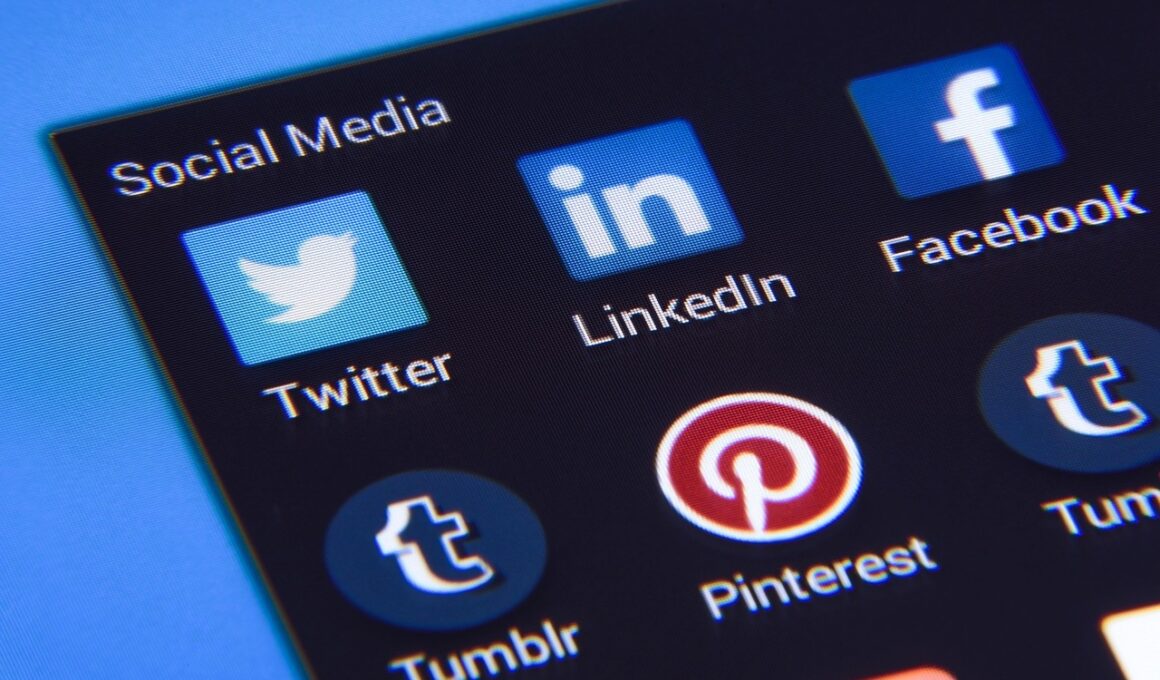The Importance of Consistent Branding Across Social Media Platforms for Events
When planning an event, the selection of social media platforms is undeniably vital. This choice not only determines the outreach of the event but also influences engagement levels. While various platforms cater to different audiences, consistency in branding is crucial across them. This encompasses the overall design, messaging, and tone employed in posts made for your event. Successful branding helps establish recognition, which is essential in creating a lasting impression. Moreover, when attendees see a cohesive message across various platforms, they perceive a more credible event. Establishing a unified look boosts brand recall, making individuals more inclined to attend the event. Choosing the right platforms entails considering where your target audience spends their time online. Popular platforms like Facebook and Instagram each offer unique strengths. For instance, Facebook provides extensive event promotion tools, while Instagram is excellent for visual storytelling. Therefore, the synergy between different social media platforms should effectively amplify your event’s message while allowing attendees to interact. In total, utilizing social media effectively requires attentive strategy to ensure smooth information dissemination and brand cohesiveness.
Following your social media branding strategy, define the specific voice and tone suitable for your event. A consistent tone will resonate with potential attendees, enhancing their emotional connection. The voice could vary greatly based on the event type; for instance, corporate events may call for a formal tone, while festivals may allow for creativity and fun. This flexibility allows the brand to adapt yet remain fundamentally recognizable. Regularly engaging with your audience across platforms further solidifies brand loyalty. Answering questions, responding to comments, and sharing behind-the-scenes content create a sense of community. Hashtags are powerful for tracking discussions and spreading word-of-mouth. One should also employ them strategically, creating unique event-specific ones for interactive engagement. Additionally, scheduling posts consistently leads to heightened visibility. Using content calendars can streamline this process, ensuring consistent updates are delivered across selected platforms. Moreover, visual elements such as logos and graphics also unify branding. The use of colors, fonts, and layouts played a pivotal role in designers creating visually enticing and consistent posts. In doing so, event organizers heighten the chances of increased participation and excitement surrounding the event itself, all while encouraging sharability and reach.
Monitor analytics across the selected platforms to understand better which content resonates most with your audience. Platforms like Instagram and Facebook offer insights into engagement rates, and these metrics are invaluable for evaluating the effectiveness of your strategies. With these performance indicators, it’s easy to identify what works. Use this data to refine your approach as necessary. For instance, if infographics elicit more interactions than traditional text posts, focus on creating similar content for maximum impact. Likewise, consider the timing of your posts, as analytics might reveal specific days or times when audience engagement peaks. Understanding audience behavior informs scheduling and optimizes potential reach. Another critical point is the importance of cross-promoting your content. Sharing links and teaser clips from one platform to another encourages followers to engage with the content, allowing you to generate interest and excitement in multiple locations. This not only increases your event’s visibility but also reinforces branding efforts. The aim is to ensure your branding remains consistent across posts while celebrating platform uniqueness. These methods anchor your identity as an event brand, allowing attendees to see the authenticity in every interaction, fostering loyalty and enthusiasm for the event.
Building a Unified Brand Experience
Branding encompasses more than just logos and slogans; it shapes the entire experience of your event across social media. This holistic view informs how every piece of content relates to the audience and the overall feelings it conjures. Capturing emotions through imagery and storytelling can significantly impact your digital presence. Attendees should connect deeply with your content. Striving to evoke emotions can help create memorable experiences. Besides visuals, storytelling enhances engagement, allowing your audience to form personal connections. This method transforms your messages from simple promotional content into stories that attendees can relate to and share. Whether it’s the excitement surrounding the venue or the intriguing profiles of the speakers, leveraging narratives invites attention. Additionally, partnerships with influencers or industry leaders can extend your outreach and provide credibility. Such partnerships, aligned with consistent branding, let you reach broader demographics effectively. Engaging with influencers can breathe fresh life into your event marketing strategy. Therefore, content generation should always be tied to a larger purpose, integrating brand identity with social storytelling. In doing so, your social media strategy evolves from mere promotion to creating genuine, meaningful interactions.
Another aspect to consider when branding your event on social media is managing user-generated content (UGC). Encouraging attendees to share their experiences using a specific hashtag promotes organic engagement with your brand. Establish an official hashtag before the event. This helps create a focal point for interactions, allowing for a collaborative and immersive experience for attendees. Monitoring UGC also allows organizers insight into attendees’ perspectives, offering valuable feedback. Highlighting selected visuals or quotes in your own social media can amplify this effort, reinforcing community support while broadening storytelling aspects. Curating content effectively illustrates the event’s success and engages prospective attendees by showcasing previous successful events. Engaging with this content demonstrates appreciation, further building loyalty and community. Re-posting UGC ensures that branding remains visible while allowing attendees a sense of ownership. Additionally, it encourages others to share their experiences next time. Thus, UGC ultimately becomes a vital component in ensuring consistent branding. Consider spotlighting participants or vendors through features or interviews to diversify your content. Such multiple angles enrich the event narrative constantly evolving while celebrating your community and its connections.
Strengthening Community Connection through Engagement
Establishing a robust community connection is crucial for successful event promotion across social media platforms. Engaging users about all event aspects creates an inviting atmosphere reflecting community involvement. Regularly post content that encourages audience participation, such as exclusive polls about themes or speakers. Such interactions foster investment from potential attendees while adding value to their experience. Additionally, holding Q&A sessions can provide clarity about the event and deepen the connection as they interact directly with organizers. This back-and-forth ultimately builds anticipation and excitement leading up to the event. Offering exclusive behind-the-scenes access fosters trust, allowing attendees to feel like insiders involved in crafting the experience. Early ticket promotions or giveaways incentivize users to spread the word. This amplifies visibility while creating buzz and encourages immediate action among followers. Explore various formats, from live videos to stories, tapping into different aspects of your community; this diversity showcases your event’s dynamic nature. By keeping followers engaged and informed, consistent branding amplifies every interaction. Remember, the goal is not only to promote the event but to establish lasting connections and maintain engagement even after the end.
Integrating all these various strategies forms a coherent plan that promotes consistent branding and achieves event goals through social media. Faultless execution brings stability and identity to the event, which is vital for pre-event excitement and post-event momentum. Consistent branding across all channels enables easy identification. Event attendees should recall the unique branding elements long after the experience. It strengthens their connection, ensuring they remain interested in future gatherings. Evaluating the overall branding strategy is paramount after the event. This phase monitors whether social media efforts aligned with the set objectives. Gathering metrics from all platforms used determines what worked and what can be improved for future endeavors. Conduct follow-up questionnaires or engage attendees in feedback forums. Their insights can provide a clearer picture of the overall success. Then, use these insights to enhance the branding initiatives for subsequent events, bolstering consistency and improving the overall audience experience. Leveraging reviews, testimonials, or video highlights also serves as an excellent promotion strategy for future events. In conclusion, build a strong brand image by integrating these principles in your social media strategy. Your events will reap the benefits.


